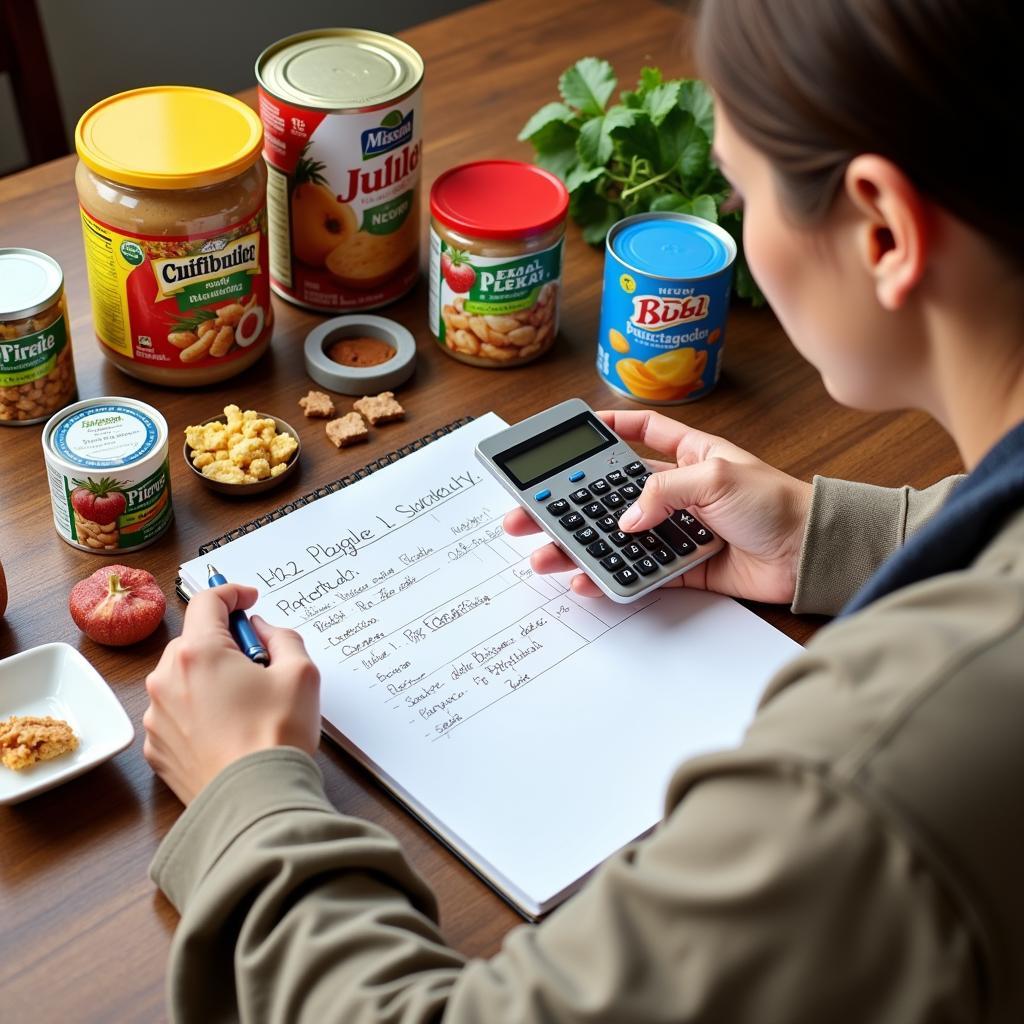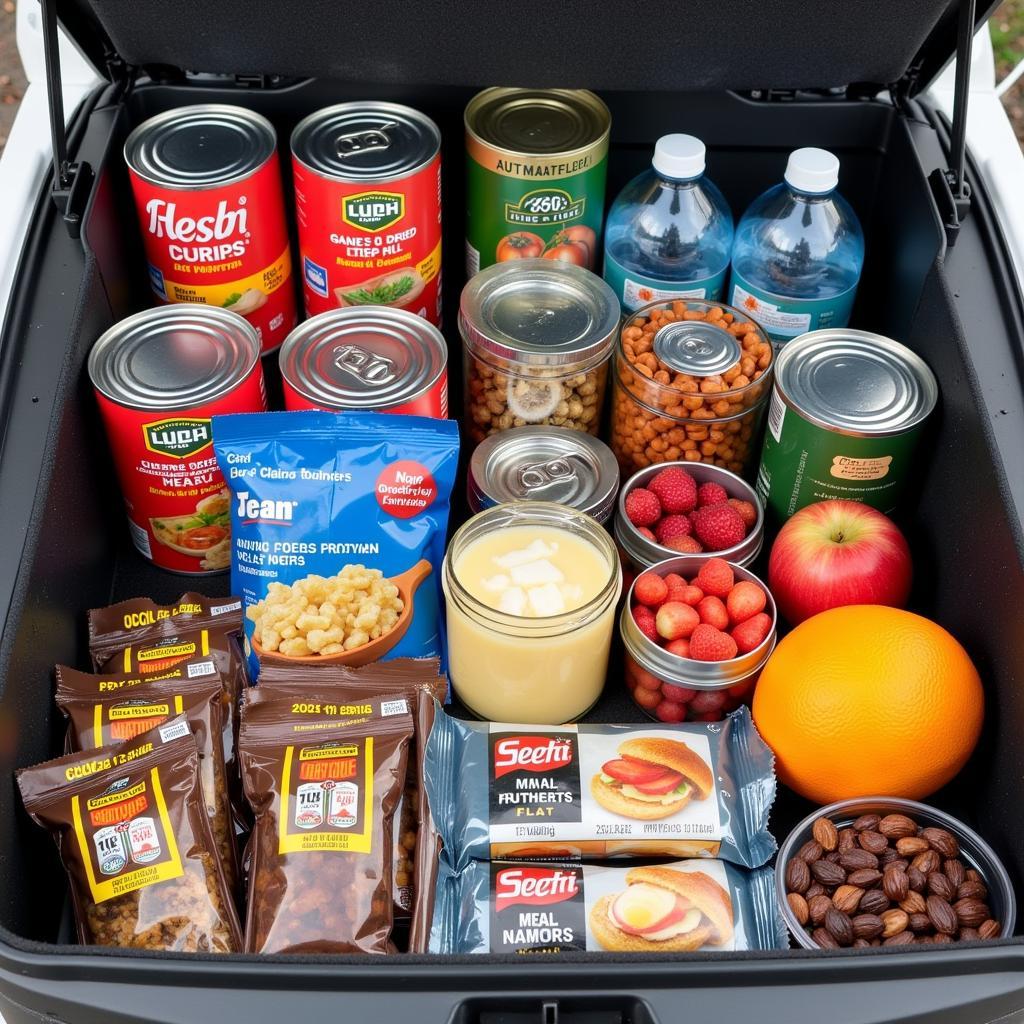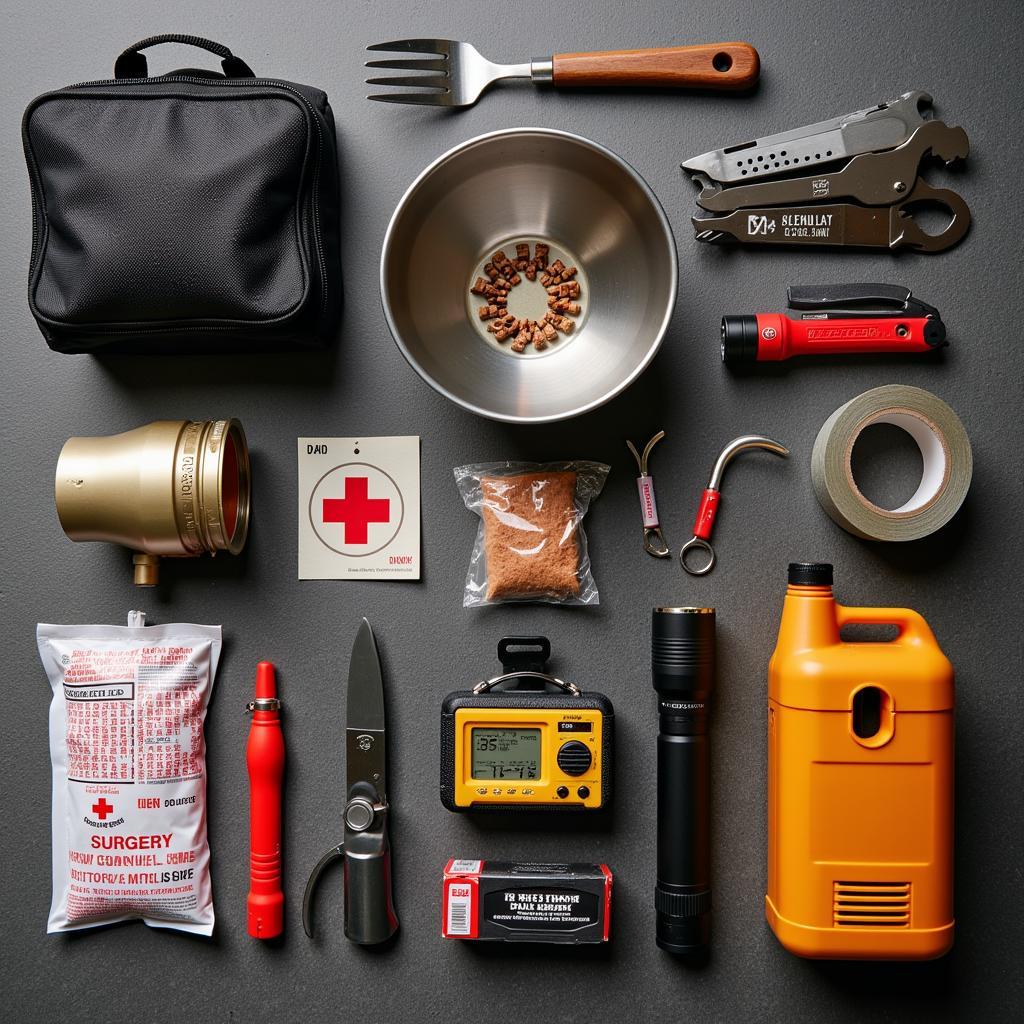A 30 Day Food Survival Kit is your lifeline in an emergency. It’s not just about surviving; it’s about thriving amidst uncertainty. Whether it’s a natural disaster, unexpected job loss, or any disruption to your daily routine, having a well-stocked kit provides peace of mind and ensures you and your family have the sustenance you need.
Planning Your 30 Day Food Survival Kit: A Step-by-Step Guide
Building a 30 day food survival kit can feel overwhelming, but it doesn’t have to be. By following these simple steps, you can create a personalized kit tailored to your family’s needs.
- Assess Your Needs: Consider your family size, dietary restrictions, and any special needs.
- Choose Your Foods: Opt for non-perishable items with a long shelf life, like canned goods, freeze-dried meals, and dehydrated fruits and vegetables. Check out options for organic freeze dried emergency food.
- Calculate Quantities: Aim for at least 2,000 calories per person per day.
- Organize and Store: Use airtight containers and store your kit in a cool, dry place. A 3 gallon food container might be a great option for storing portions of your kit.
- Regularly Rotate: Check expiration dates and rotate your food supplies to ensure freshness.
 Planning Your 30 Day Survival Kit
Planning Your 30 Day Survival Kit
Essential Food Items for Your 30 Day Food Survival Kit
Your kit should include a variety of nutritious and easy-to-prepare foods. Don’t forget to include emergency freeze dried food for its long shelf life and ease of preparation. Think about incorporating:
- Protein Sources: Canned tuna, salmon, beans, lentils, and nuts.
- Grains: Rice, pasta, oatmeal, and crackers.
- Fruits and Vegetables: Canned fruits, dried fruits, and dehydrated vegetables.
- Dairy: Powdered milk and shelf-stable milk alternatives.
- Comfort Foods: Include a few treats like chocolate or hard candies to boost morale.
 Essential Food Items in a Survival Kit
Essential Food Items in a Survival Kit
What about Water in a 30-Day Food Survival Kit?
Water is just as crucial as food in a survival situation. Store at least one gallon of water per person per day. Consider water purification tablets or a water filter as backup options. Explore resources for emergency food and water to ensure you’re well-prepared.
How much water should I store?
Store at least one gallon per person per day.
What are good water purification methods?
Boiling, water purification tablets, and water filters are all viable options.
“Proper hydration is often overlooked in emergency preparedness,” says survival expert, Dr. Sarah Matthews. “Water is essential for bodily functions, especially in stressful situations.”
Beyond the Basics: Enhancing Your 30 Day Food Survival Kit
Think beyond the basics. Consider adding these items to make your kit even more comprehensive.
- Cooking Supplies: A portable camping stove, fuel, and basic cooking utensils.
- First-Aid Kit: Essential medical supplies for minor injuries and illnesses.
- Tools and Supplies: Can opener, multi-tool, duct tape, and a hand-crank radio.
 Enhancing Your Survival Kit with Essential Tools
Enhancing Your Survival Kit with Essential Tools
“Don’t just survive, thrive,” advises wilderness guide, David Thompson. “A well-rounded kit equips you to handle unforeseen challenges.” Don’t forget to check out options for free survival food kits to get you started.
Conclusion: Securing Your Future with a 30 Day Food Survival Kit
Preparing a 30 day food survival kit is a proactive step towards ensuring your family’s well-being in times of crisis. It’s an investment in peace of mind and security. Don’t wait until disaster strikes, start building your kit today.
FAQ
- How often should I rotate my food supplies? Every 6-12 months, depending on the expiration dates.
- What are the best storage containers for a survival kit? Airtight, food-grade containers are ideal.
- Can I include pet food in my survival kit? Absolutely! Your pets are part of the family too.
- Where should I store my survival kit? In a cool, dry, and easily accessible location.
- What if I have dietary restrictions? Choose foods that meet your specific needs.
- How can I make my survival kit more budget-friendly? Gradually build your kit over time.
- Should I include any non-food items in my kit? Yes, consider essential tools, first-aid supplies, and hygiene products.
Need further assistance? Contact us at Phone Number: 02437655121, Email: minacones@gmail.com Or visit us at: 3PGH+8R9, ĐT70A, thôn Trung, Bắc Từ Liêm, Hà Nội, Việt Nam. We have a 24/7 customer support team.